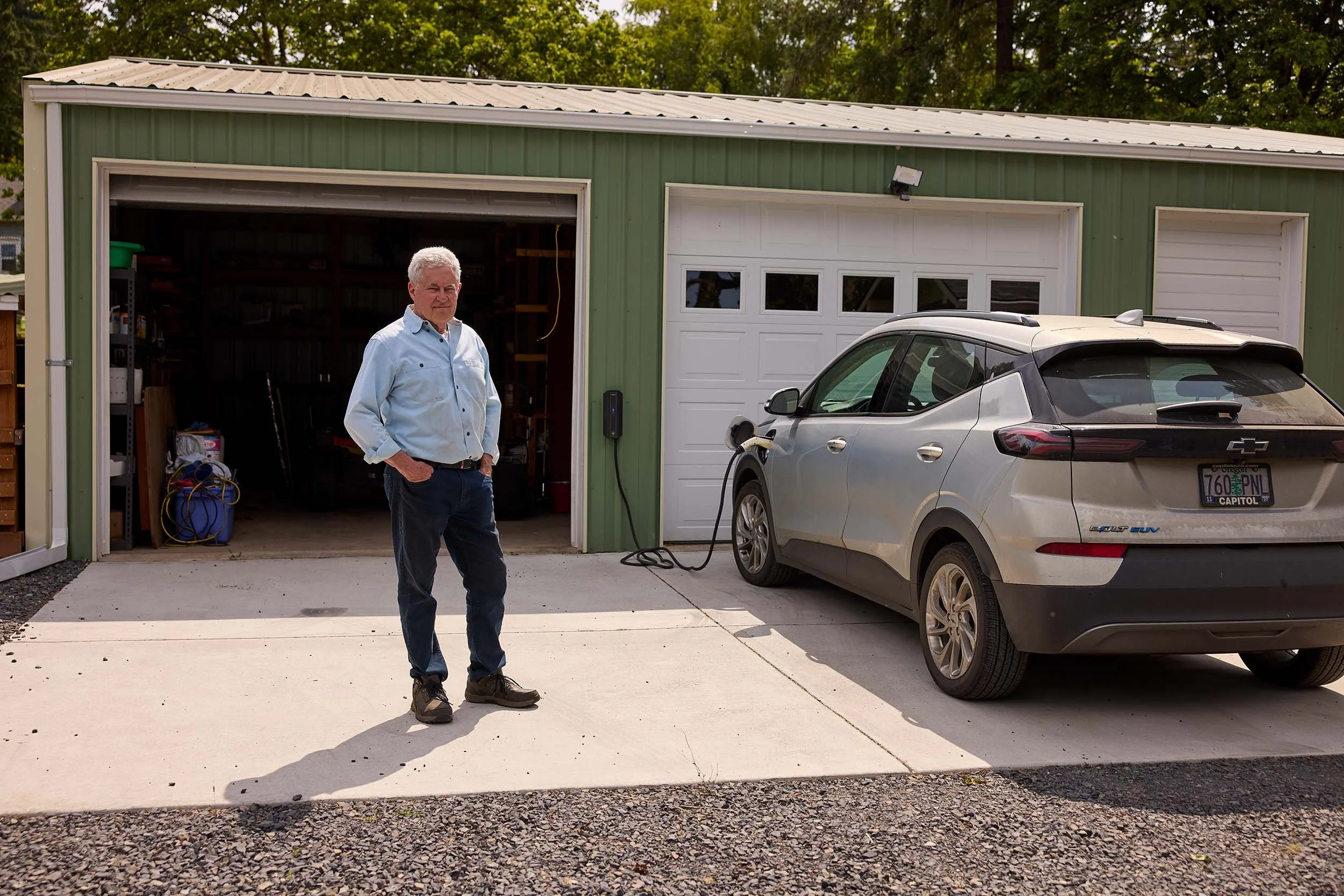From Politics to Apple & Solar Farming: Tim Nesbitt’s Electric Retirement
Tim Nesbitt lives near Independence, Oregon, a charming town in the Willamette Valley with a relaxed, historic downtown surrounded by lush farmland and picturesque vineyards. The former Chief of Staff to Oregon Governor Ted Kulongoski, Tim retired to a small farm with an expansive apple orchard where he is demonstrating that going electric can be a game-changer for a retiree’s wallet.
In 2020, Tim installed 84 ground-mounted solar panels that generate 18-19 kWh daily. “I initially did it because the payback looked good, but the reliability and resilience have been really important, too,” he says. “We get hit with power outages about once a month, and our solar and battery energy storage systems keep the lights on.” Now his system powers pretty much everything — a mini-split heat pump for heating and cooling, all of his household lighting and appliances, and his all-electric Chevy Bolt, which he drives about 24,000 miles a year. “All that, and I still send extra juice back into the grid.”
Why a Bolt? Tim wanted to drive something reliable and economical, and after talking to a few friends and diving into the Chevy Bolt subreddit—a fan club he swears by—he picked the EUV (Electric Utility Vehicle). “It’s exactly what I needed,” he says. With a Level 2 charger at his house and 247 miles of range, his daily driving and frequent 120-mile round trips to Portland are a snap.






Cost Breakdown: Gas vs. Electric
Tim and his partner still have an old Chevy Silverado that gets about 15 miles per gallon. “It’s a useful vehicle for hauling and landscape work,” he says, “but it’s expensive to operate, so we’ve pretty much retired it.” At $3.80 a gallon, driving the old truck 24,000 miles would cost $6,080 yearly, plus $800 in maintenance, for an annual total of about $6,880. The Bolt, which cost $25,000 after a $7,500 tax credit, flipped the script. At 4 miles per kWh, driving the same 24,000 miles requires only 6,000 kWh and costs Tim nothing. If he were buying local power for $0.12 per kWh, he’d pay about $720 a year, but with solar panels fueling his car, the Bolt’s fuel bill amounts to zero.
Along with the Silverado, Tim and his partner still use an older Honda CRV with a trailer for hauling and moving machinery, and they also have an old riding mower. However, his woodshop tools are all electric, as are his battery-powered weed wacker and leaf blower. He says that, like his Bolt, they’re all more reliable and convenient to use than gas-powered options. “Maintenance is minimal, and with grid electricity costing 50% more than when we installed the solar array five years ago, all of the equipment’s payback period has already shortened.”
Catalyzing a Rural Shift
Tim is a constant communicator — weekly lunch groups, regular forums, and columns for the Oregon Capital Chronicle keep him engaged in public policy issues and connected to friends and the wider community. His Bolt and his solar array are both conversation starters. “Neighbors notice when you go solar or drive electric,” he says. “It spreads.” A friend in Clackamas County turned 12 acres of his 100-acre farm into a solar field, which earns him $1,500 per acre yearly and matches the net income from many low-value crops. “Most farms have poor soil somewhere,” Tim says. “More of them could pair solar with EV charging to run their buildings, pickup trucks, tools, and other equipment on sunlight.”
If you spot a Bolt EUV zipping past Marion County’s orchards or parked by a solar array in Independence, stop and say hello—it’s likely Tim Nesbitt, an all-in solar and electrification advocate who’s proving that sustainability pays.

